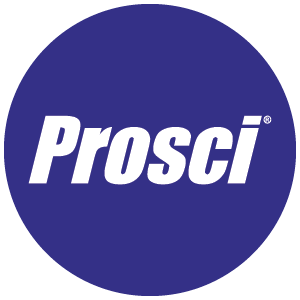What You Need to Know About ADKAR: The Author’s Perspective

5 Mins
Updated: August 19, 2025
Published: October 18, 2024

The Prosci ADKAR® Model, developed by Jeff Hiatt, is a foundational framework in change management. It represents the journey individuals go through during organizational change. Prosci’s latest publication, The ADKAR Advantage, builds on this model, offering new insights and practical examples to help organizations and individuals successfully navigate change.
In this article, we explore our popular ADKAR Model in an interview with Karen Ball, Prosci Senior Fellow and author of The ADKAR Advantage. Let's examine ADKAR's origins and significance, the new book's big ADKAR updates, and essential strategies for applying ADKAR at scale.
What is the Prosci ADKAR Model, and Why Is it Important?
ADKAR facilitates both individual and organizational change. Standing for Awareness, Desire, Knowledge, Ability and Reinforcement, the ADKAR Model represents the essential building blocks of individual change. People need to have all five to successfully adopt a change.
Hiatt’s original research demonstrated that successful organizational change depends not just on executing tasks but on guiding individuals through these five elements, ensuring they’re equipped and motivated to transition. Our ADKAR Model remains critical in change management because of its focus on the human side of change.
"The ADKAR Model is rooted in how we help each person, one person, every person goes through the change process.” —Karen Ball, Prosci Senior Fellow and Author of The ADKAR Advantage
Unlike models that prioritize processes, ADKAR emphasizes that true transformation occurs at the individual level. By addressing each person’s awareness, desire, knowledge, ability and reinforcement, organizations achieve lasting results.
The Prosci ADKAR Model

How Does The ADKAR Advantage Build on the ADKAR Model?
The ADKAR Advantage builds on our ADKAR Model by incorporating two decades of new research, insights, and real-world applications. As Ball explains, this updated edition includes “additional research findings and insights we've gathered that validate the promise of ADKAR.”
As the pace of change accelerates across industries, this timely book reinforces ADKAR's effectiveness with:
- New research that validates the foundational principles of ADKAR
- Examples and case studies of how different organizations applied the ADKAR Model
- Updated guidance and recommendations for applying ADKAR in different environments
One of the key goals of The ADKAR Advantage is to provide more detailed guidance on how to apply our ADKAR Model in various contexts. The book goes beyond theory, offering real-world examples and success stories that illustrate how organizations have used our ADKAR Model to implement large-scale changes. These stories help readers connect the model to their own experiences, showcasing practical ways to overcome challenges.
This new book strengthens the foundation of our ADKAR Model by emphasizing the model's powerful simplicity, unmatched flexibility, and continued relevance.

What More Have We Learned in Our ADKAR Model Research?
The latest research, featured in The ADKAR Advantage, expands on the original model, applying it to the faster-paced, more complex change environments common today.
“There's more complexity of change. There's more integrated change. There are more change dynamics forcing us as organizations to move very, very quickly,” says Ball.
The research highlights the importance of staying true to ADKAR’s core principle:
"Change happens at the individual level, and collective change is only achieved when individuals successfully transition."
New research areas include:
- Integrating ADKAR with Agile and other modern methodologies
- Applying ADKAR in the age of remote and hybrid workplaces
- Emphasizing proactive change readiness over "combating resistance"
- Applying force field analysis to examine the forces that drive and inhibit change
The book also includes real-world data demonstrating that organizations that prioritize individual readiness see higher success rates, reinforcing the continued relevance of our ADKAR Model in today’s dynamic business environments.
What Are Some Common Challenges in Applying ADKAR to Large-Scale Changes?
Applying the ADKAR Model to large-scale changes presents several challenges, including ensuring consistent communication and support across all organizational levels and adapting the model for individuals with varying levels of readiness.
Here are some key challenges:
- Scaling ADKAR for large groups – As Ball explains, "Getting one individual through the ADKAR Model is very, very different from getting 50,000 people through the ADKAR Model to produce those organizational results.” Ensuring that communication is clear, timely, and relevant to all impacted individuals is critical, but can be difficult to maintain at scale.
- Aligning leadership and sponsorship – Effective change requires visible and active support from leadership, but in large organizations, this can be difficult to coordinate. Ball notes that success is driven by having sponsors who are aware of their role and committed to it: “Do they have the desire to behave in a way that represents the behaviors of an effective sponsor? Do they know how to do that?” Ensuring leaders are equipped and motivated to support change efforts is critical for overcoming this challenge and ensuring a smooth transition for the entire organization.
While these challenges can seem daunting, they are not insurmountable. With the right strategies in place, organizations can successfully realize large-scale change and ensure that the ADKAR Model is applied effectively.

How Can Organizations Overcome These Challenges?
Organizations can overcome these challenges by setting clear, outcome-based milestones for each element of ADKAR. This helps ensure that teams track progress and maintain focus, allowing organizations to measure success for each element.
"ADKAR provides an outcome-based orientation for change management activities."
Building a network of change agents within the organization can also help scale communication and support, aligning individual goals with broader organizational objectives. As Ball points out, one healthcare organization mentioned in the book successfully guided 50,000 employees through a complex software change by “creating the change experience through the lens of ADKAR.”
Leadership engagement is critical for sustaining momentum. Tracking sponsor engagement through ADKAR allows organizations to identify gaps and develop a plan for sustained support, including:
- Build awareness of their role and its importance
- Develop desire to engage and take action as active, visible sponsors
- Provide knowledge of the behaviors that define effective sponsorship
- Develop their ability to communicate, coach and engage their teams effectively
- Provide reinforcement of change outcomes by continuously showing support
By applying ADKAR, your organization can overcome the engagement and scaling challenges that any large-scale change faces.
ADKAR and Individuals: the Core of the Prosci Methodology

How Do You Scale the Prosci ADKAR Model?
Scaling ADKAR effectively requires a focus on:
- Outcomes
- Leadership engagement
- Readiness assessments
- Communication
- Use of change agent networks
But most importantly, it’s a lens through which you organize change. Referring to the healthcare organization's change for 50,000 employees, Ball explains, “They didn't actually even introduce the language of ADKAR to the 50,000 people, they just acted through the lens of ADKAR.”
Engaging leaders is also crucial for scaling. Ball emphasizes the importance of having leaders who are aware of their role and motivated to support change and change management, noting the importance of reinforcing that support. “Sometimes, it’s as simple as calling up my sponsor and saying thank you.”
How Can ADKAR Help in Building Change Readiness Instead of Just Managing Resistance?
ADKAR helps build change readiness by focusing on proactive strategies rather than just managing resistance behaviors as they occur. Ball emphasizes that ADKAR helps leaders shift the focus away from change resistance and toward building change readiness. It allows leaders to assess where individuals are in their change journey and address specific barriers accordingly.
Readiness assessments are a key part of this, helping organizations understand what each person needs to progress through the ADKAR elements. Once leaders understand their employees’ level of readiness, they can employ targeted communication strategies tailored to each element of the ADKAR Model. This helps ensure individuals are informed and motivated.
Ball says, "ADKAR is the articulation of the outcomes we’re trying to achieve," meaning communication is directed at achieving specific milestones like awareness or desire. Ongoing training and support are essential for building the ability to implement change, ensuring individuals are well-equipped with everything they need.
How Does ADKAR Integrate With Agile and Other Modern Methodologies?
What makes our ADKAR Model so adaptable is its outcome-oriented approach. As Ball notes, “Awareness is an outcome, whether you're doing hybrid, Agile or waterfall,” or any other similar methodologies. While Agile focuses on delivering iterative changes with short time periods between changes, the ADKAR Model ensures individuals progress through the necessary elements—Awareness, Desire, Knowledge, Ability and Reinforcement—needed to embrace those changes.
Modern methodologies and our ADKAR Model also emphasize people as individuals rather than processes, so they’re compatible in their approach to the scale of change and the desired outcomes.
Discover the Full ADKAR Advantage
The ADKAR Advantage deepens our understanding of the Prosci ADKAR Model, reinforcing its relevance in modern change management. By exploring new research, success stories and practical strategies, this book equips change practitioners with the tools to enable effective and sustainable change.
Whether you’re new to our ADKAR Model or a seasoned practitioner, the insights in The ADKAR Advantage will help you navigate the complexities of today’s change landscape. Listen to our interview with Karen Ball or access the full book today to learn more.



